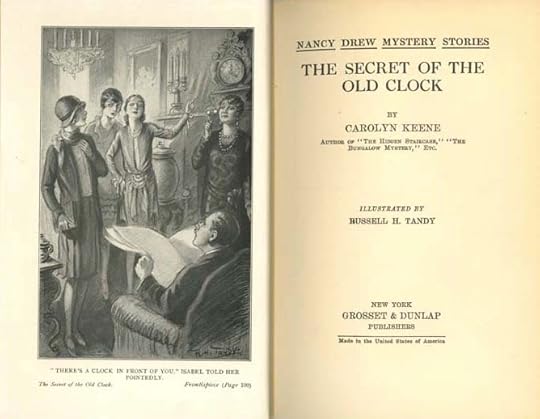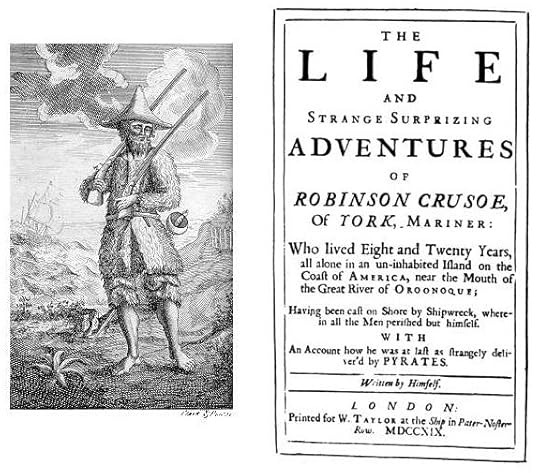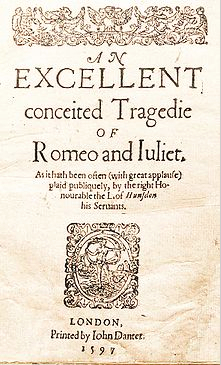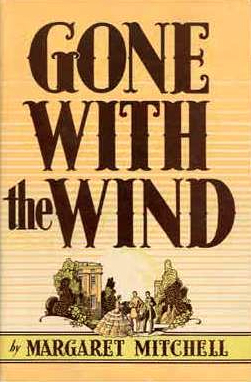C.A. Pack's Blog, page 2
October 23, 2014
Isaac Asimov on Creativity
Just saw this quote by Isaac Asimov from a 1959 essay he wrote and want to remember it:
"My feeling is that as far as creativity is concerned, isolation is required. The creative person is, in any case, continually working at it. His mind is shuffling his information at all times, even when he is not conscious of it."
I couldn't agree more.
"My feeling is that as far as creativity is concerned, isolation is required. The creative person is, in any case, continually working at it. His mind is shuffling his information at all times, even when he is not conscious of it."
I couldn't agree more.
Published on October 23, 2014 15:06
October 3, 2014
OMG I’m writing YANA
OMG I’m writing YANA.
Huh?
I just read a guest post on literary agent Jill Corcoran's blog written by Editor & Author of Writing New Adult Fiction, Deborah Halverson. It describes the difference between new adult (NA) and young adult (YA) fiction. The author defines the difference as sensibilities. I believe I’ve blogged before how YA has a teenage protagonist and that NA skews older. However, NA can also have a teen protagonist—an older teen protagonist—who may be 18 or 19 (and up to 24) years old. NA is for older teens who may have graduated high school and are now in college or their first job. They’re no longer minors and are responsible for their lives. So—more than sensibilities—it’s about responsibilities.
In my Library of Illumination series, Johanna Charette (17) starts a new career and is responsible for her own life. She’s my female protagonist, and while she’s younger than expected, she definitely falls in the new adult category. On the other hand, Jackson Roth (16) is still in high school and lives at home with his mother, brother and sister. He’s definitely a young adult character.
This means I’m writing hybrid young adult-new adult, or YANA. My reader demographic has just increased from 14 – 18, to 14 – 24. On the surface, it sounds great, but there’s a lot to be said for a narrow demographic. I don’t feel comfortable including expletives in a book for young adults (although many young adults use them), or sexual scenes (even though in the words of my then-15 year old nephews, the three things they thought about most were sex, X-box, and girls). It’s about setting an example for young people that their parents are comfortable with. But I don’t have those same concerns writing for a new adult audience. Their tender sensibilities have already been colored by the realities of the world around them. They can take the spice.
My characters are in a series, so in another year or so, my protagonists will both segue firmly into new adult territory. Will it change the way I write? Perhaps. The attraction between them will grow, and so will their vocabulary. But gratuitous sex and explicit language are not my usual M.O. so the changes may be subtle. For now, my YANA will be kinder and gentler, and the violence of war will continue to be more general and less explicit. YA.
But, I can’t promise it will always stay that way. NA.
Huh?
I just read a guest post on literary agent Jill Corcoran's blog written by Editor & Author of Writing New Adult Fiction, Deborah Halverson. It describes the difference between new adult (NA) and young adult (YA) fiction. The author defines the difference as sensibilities. I believe I’ve blogged before how YA has a teenage protagonist and that NA skews older. However, NA can also have a teen protagonist—an older teen protagonist—who may be 18 or 19 (and up to 24) years old. NA is for older teens who may have graduated high school and are now in college or their first job. They’re no longer minors and are responsible for their lives. So—more than sensibilities—it’s about responsibilities.
In my Library of Illumination series, Johanna Charette (17) starts a new career and is responsible for her own life. She’s my female protagonist, and while she’s younger than expected, she definitely falls in the new adult category. On the other hand, Jackson Roth (16) is still in high school and lives at home with his mother, brother and sister. He’s definitely a young adult character.
This means I’m writing hybrid young adult-new adult, or YANA. My reader demographic has just increased from 14 – 18, to 14 – 24. On the surface, it sounds great, but there’s a lot to be said for a narrow demographic. I don’t feel comfortable including expletives in a book for young adults (although many young adults use them), or sexual scenes (even though in the words of my then-15 year old nephews, the three things they thought about most were sex, X-box, and girls). It’s about setting an example for young people that their parents are comfortable with. But I don’t have those same concerns writing for a new adult audience. Their tender sensibilities have already been colored by the realities of the world around them. They can take the spice.
My characters are in a series, so in another year or so, my protagonists will both segue firmly into new adult territory. Will it change the way I write? Perhaps. The attraction between them will grow, and so will their vocabulary. But gratuitous sex and explicit language are not my usual M.O. so the changes may be subtle. For now, my YANA will be kinder and gentler, and the violence of war will continue to be more general and less explicit. YA.
But, I can’t promise it will always stay that way. NA.
September 26, 2014
A Dozen Traits I Have in Common with Charles Dickens


Okay, maybe it’s a little (little?) pretentious of me to compare myself with Charles Dickens—a man regarded by many as the greatest writer of Victorian times—but if I don’t point out our similarities, no one else will. I feel I have a bond with Chuck (he loved nicknames) and I’d like to explain why.
1. Obviously, he was a fiction author. Guess what? Me, too.
2. A lot of Dickens work was written episodically. If you’ve read Chronicles: The Library of Illumination, you know I write episodically, as well.
3. Dickens was born on February 7th. Me, too!
4. He was born on an island (Portsea Island in Portsmouth). I was born on Long Island in New York.
5. Dickens wrote numerous novellas and short stories. Ibid!
6. He liked to weave topical elements into his plots. Been there, done that (oh wait, did I just use an outdates cliché? That's somewhat topical).
7. Chucky is known to have been a voracious reader. I read every book in the juvenile section of the Lindenhurst Memorial Library by the time I turned eleven.
8. He worked as a reporter. OMG, the comparisons are just too much to bear!
9. Dickens was afraid of bats. I can say with certainty that I am, too.
10. We both are drawn to the paranormal. He can be linked to “The Ghost Club” of London. I can be linked to Evangeline’s Ghost.
11. The Chuckster self-published one of his books—the most famous one—A Christmas Carol. Did you notice how he used my first name in the title? Our bond was blooming even before I was born.
12. And in the study of one of his homes, he had a door which was designed like a bookcase (filled with fake books rumored to include titles like: Noah’s Arkitecture, and a nine-volume set titled Cat’s Lives) that led to a secret room. Okay, I don’t have one of those, but are you aware of the high cost of custom cabinetry? I would if I could.
Anyway, I thought I’d let you know about one of my idols, and the many traits we share. Hey Chuck, if you can hear me, send some positive authorly karma my way (see no. 10). And, yes, I know ‘authorly’ is not a word, but neither was ‘abuzz’ until Dickens coined it. I rest my case.
“The most important thing in life is to stop saying 'I wish' and start saying 'I will.'”
― David Copperfield

Okay, maybe it’s a little (little?) pretentious of me to compare myself with Charles Dickens—a man regarded by many as the greatest writer of Victorian times—but if I don’t point out our similarities, no one else will. I feel I have a bond with Chuck (he loved nicknames) and I’d like to explain why.
1. Obviously, he was a fiction author. Guess what? Me, too.
2. A lot of Dickens work was written episodically. If you’ve read Chronicles: The Library of Illumination, you know I write episodically, as well.
3. Dickens was born on February 7th. Me, too!
4. He was born on an island (Portsea Island in Portsmouth). I was born on Long Island in New York.
5. Dickens wrote numerous novellas and short stories. Ibid!
6. He liked to weave topical elements into his plots. Been there, done that (oh wait, did I just use an outdates cliché? That's somewhat topical).
7. Chucky is known to have been a voracious reader. I read every book in the juvenile section of the Lindenhurst Memorial Library by the time I turned eleven.
8. He worked as a reporter. OMG, the comparisons are just too much to bear!
9. Dickens was afraid of bats. I can say with certainty that I am, too.
10. We both are drawn to the paranormal. He can be linked to “The Ghost Club” of London. I can be linked to Evangeline’s Ghost.
11. The Chuckster self-published one of his books—the most famous one—A Christmas Carol. Did you notice how he used my first name in the title? Our bond was blooming even before I was born.
12. And in the study of one of his homes, he had a door which was designed like a bookcase (filled with fake books rumored to include titles like: Noah’s Arkitecture, and a nine-volume set titled Cat’s Lives) that led to a secret room. Okay, I don’t have one of those, but are you aware of the high cost of custom cabinetry? I would if I could.
Anyway, I thought I’d let you know about one of my idols, and the many traits we share. Hey Chuck, if you can hear me, send some positive authorly karma my way (see no. 10). And, yes, I know ‘authorly’ is not a word, but neither was ‘abuzz’ until Dickens coined it. I rest my case.
“The most important thing in life is to stop saying 'I wish' and start saying 'I will.'”
― David Copperfield
Published on September 26, 2014 20:36
•
Tags:
c-a-pack, charles-dickens, lindenhurst-memorial-library, writers
September 8, 2014
Romeo & Juliet
Published on September 08, 2014 16:08
•
Tags:
first-edition, romeo-and-juliet, shakespeare
September 1, 2014
Genre Stew
Have you ever been befuddled by genres?
My Library of Illumination series has teen protagonists (young adult) who work at a library where books come to life (fantasy) and it happens in an urban setting (urban fantasy), but it has shape shifters and sorcerers in it (paranormal), and a time machine (science fiction). It’s written as individual novelettes and novellas and then grouped into novel-length “chronicles.” Most of Chronicles: The Library of Illumination (books 1 - 5) takes place in a library in the real world (paranormal) but it has a nuclear energy theme in one of the stories (science fiction), and magical elements (back to fantasy). I’m now at work on the Second Chronicles of Illumination—which includes my latest novelette—The Overseers—and it involves travel to other worlds (science fiction), with different beings and different cultures (fantasy, fantasy, fantasy).
For those of you who aren’t sure how these specific genres are defined, here’s a rough breakdown of the differences:
FANTASY: Something that can’t possibly happen, made to sound like it can—in an other-world setting. J.R.R. Tolkiens’s Lord of the Rings is fantasy all the way. It clearly involves fantastical creatures set in other worlds or realities.
URBAN FANTASY: Fantasy in an urban setting. Sookie Stackhouse novels by Charlaine Harris fall under the urban fantasy umbrella.
PARANORMAL: Supernatural aspects (ghosts, shape shifters, werewolves) happening in a real world setting. The Twilight series by Stephanie Meyer fits the paranormal genre. It happens in the real world, but there’s a weird element (vampires) in it. One of my books, Evangeline’s Ghost, straddles the line between urban fantasy and paranormal because my ghost travels back-and-forth from New York City to Heaven.
SCIENCE FICTION: Something that’s possible even if it’s improbable. H.G. Welles novels are as sci-fi as it gets. What’s interesting is that Diana Gabaldon’s Outlander series is also considered sci-fi, although I would have labeled it paranormal. So, as you can see, this genre “thing” is not cut and dried.
Then there’s HORROR, which is any of the above genres written to scare the bejeebers out of you. Stephen King novels like Carrie and Mr. Mercedes are easy to identify as horror.
Just to add another dimension to the genre dilemma, my primary demographic is young adult, which is often listed as a genre. For the most part, young adult literature can be any genre that has teen protagonists. There’s also new adult, but I believe that category skews older, with protagonists in their 20’s.
As my Library of Illumination series continued, I had envisioned my protagonists morphing from YA into new adult territory, however, in The Overseers, they undergo a special ritual that stops that from happening. They may get older with each new adventure, but if you read the book, you’ll understand why that will no longer affect their YA designation.
I hope this helps eliminate some confusion.
Note: This blog was originally written by me as an August guest post for www.bookinglyyours.blogspot.com/
My Library of Illumination series has teen protagonists (young adult) who work at a library where books come to life (fantasy) and it happens in an urban setting (urban fantasy), but it has shape shifters and sorcerers in it (paranormal), and a time machine (science fiction). It’s written as individual novelettes and novellas and then grouped into novel-length “chronicles.” Most of Chronicles: The Library of Illumination (books 1 - 5) takes place in a library in the real world (paranormal) but it has a nuclear energy theme in one of the stories (science fiction), and magical elements (back to fantasy). I’m now at work on the Second Chronicles of Illumination—which includes my latest novelette—The Overseers—and it involves travel to other worlds (science fiction), with different beings and different cultures (fantasy, fantasy, fantasy).
For those of you who aren’t sure how these specific genres are defined, here’s a rough breakdown of the differences:
FANTASY: Something that can’t possibly happen, made to sound like it can—in an other-world setting. J.R.R. Tolkiens’s Lord of the Rings is fantasy all the way. It clearly involves fantastical creatures set in other worlds or realities.
URBAN FANTASY: Fantasy in an urban setting. Sookie Stackhouse novels by Charlaine Harris fall under the urban fantasy umbrella.
PARANORMAL: Supernatural aspects (ghosts, shape shifters, werewolves) happening in a real world setting. The Twilight series by Stephanie Meyer fits the paranormal genre. It happens in the real world, but there’s a weird element (vampires) in it. One of my books, Evangeline’s Ghost, straddles the line between urban fantasy and paranormal because my ghost travels back-and-forth from New York City to Heaven.
SCIENCE FICTION: Something that’s possible even if it’s improbable. H.G. Welles novels are as sci-fi as it gets. What’s interesting is that Diana Gabaldon’s Outlander series is also considered sci-fi, although I would have labeled it paranormal. So, as you can see, this genre “thing” is not cut and dried.
Then there’s HORROR, which is any of the above genres written to scare the bejeebers out of you. Stephen King novels like Carrie and Mr. Mercedes are easy to identify as horror.
Just to add another dimension to the genre dilemma, my primary demographic is young adult, which is often listed as a genre. For the most part, young adult literature can be any genre that has teen protagonists. There’s also new adult, but I believe that category skews older, with protagonists in their 20’s.
As my Library of Illumination series continued, I had envisioned my protagonists morphing from YA into new adult territory, however, in The Overseers, they undergo a special ritual that stops that from happening. They may get older with each new adventure, but if you read the book, you’ll understand why that will no longer affect their YA designation.
I hope this helps eliminate some confusion.
Note: This blog was originally written by me as an August guest post for www.bookinglyyours.blogspot.com/
Published on September 01, 2014 13:41
August 25, 2014
Nancy Drew as Inspiration
One of the reasons why I became such an avid reader (and now, writer) is Nancy Drew, teen detective. I read every single book my library carried in that series and switched to the Hardy Boys when I ran out of Nancy Drew mysteries to read.

The books have been modernized over the years, but the original books were noted for having an edgier teen heroine with a lot of attitude.

I just saw a first edition of the first Nancy Drew mystery, The Secret of the Old Clock, on Ebay and honestly considered bidding on it, but the book was in such bad condition I let it pass. Still, someday I hope to buy a similar early edition of Nancy Drew and put it on my bookshelf right next to my first editions of Thorne Smith's Topper and Topper Takes a Trip. If you read my book Evangeline's Ghost Evangeline's Ghost, you know I like to write about ghosts, as well as teenage female heroines, like Johanna Charette in the Library of Illumination series. Chronicles: The Library of Illumination

The books have been modernized over the years, but the original books were noted for having an edgier teen heroine with a lot of attitude.

I just saw a first edition of the first Nancy Drew mystery, The Secret of the Old Clock, on Ebay and honestly considered bidding on it, but the book was in such bad condition I let it pass. Still, someday I hope to buy a similar early edition of Nancy Drew and put it on my bookshelf right next to my first editions of Thorne Smith's Topper and Topper Takes a Trip. If you read my book Evangeline's Ghost Evangeline's Ghost, you know I like to write about ghosts, as well as teenage female heroines, like Johanna Charette in the Library of Illumination series. Chronicles: The Library of Illumination
Published on August 25, 2014 10:08
•
Tags:
nancy-drew, teen-heroine, topper
August 11, 2014
Around the World in 80 Days cover
Saw this cover from the 1873 "first edition" of Around the World in 80 Days on Wikipedia.

It looks like one of those leather-bound books you can buy today in Barnes & Nobles. Seems odd to see such a highly decorated book from 140 years ago, doesn't it?

It looks like one of those leather-bound books you can buy today in Barnes & Nobles. Seems odd to see such a highly decorated book from 140 years ago, doesn't it?
Published on August 11, 2014 07:36
•
Tags:
around-the-world-in-80-days, book-covers
August 2, 2014
Gone With the Wind Cover
Published on August 02, 2014 16:34
•
Tags:
classics
July 24, 2014
Elmore Leonard's Rules of Writing in Black & White
Elmore Leonard's Ten Rules of Writing
1. Never open a book with weather.
2. Avoid prologues.
3. Never use a verb other than "said" to carry dialogue.
4. Never use an adverb to modify the verb "said”…he admonished gravely.
5. Keep your exclamation points under control. You are allowed no more than two or three per 100,000 words of prose.
6. Never use the words "suddenly" or "all hell broke loose."
7. Use regional dialect, patois, sparingly.
8. Avoid detailed descriptions of characters.
9. Don't go into great detail describing places and things.
10. Try to leave out the part that readers tend to skip.
1. Never open a book with weather.
2. Avoid prologues.
3. Never use a verb other than "said" to carry dialogue.
4. Never use an adverb to modify the verb "said”…he admonished gravely.
5. Keep your exclamation points under control. You are allowed no more than two or three per 100,000 words of prose.
6. Never use the words "suddenly" or "all hell broke loose."
7. Use regional dialect, patois, sparingly.
8. Avoid detailed descriptions of characters.
9. Don't go into great detail describing places and things.
10. Try to leave out the part that readers tend to skip.
Published on July 24, 2014 11:04
•
Tags:
elmore-leonard, writing
June 27, 2014
First Edition Robinson Crusoe, 1719
Great story, but by today's standards, this book would never have been published. It tends to be long-winded and repetitive.


Published on June 27, 2014 20:31
•
Tags:
robinson-crusoe





